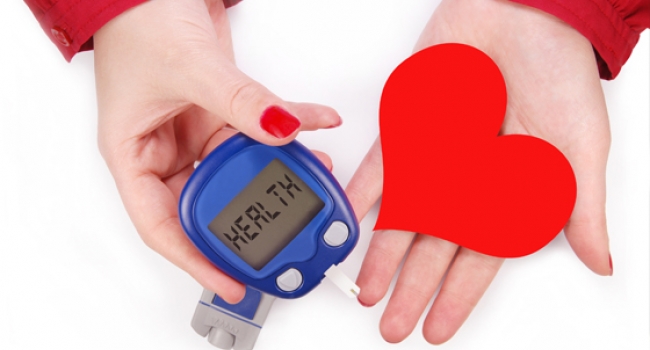- Latest news▼
-
16:38, May 6 Daily Mail: decaf coffee is high in fibre

-
15:26, May 6 Ministry of Health of Armenia: Laboratory-confirmed measles cases increased by 27 compared to the previous week

-
14:41, May 6 MedicalXpress: Diabetes drug lowers COVID-19 viral load 4-fold, study finds

-
08:27, May 6 Researchers determine how physical activity affects women's health in middle age

-
18:15, May 4 What role does diet plays in the treatment of bipolar disorder?

-
10:52, May 4 Scientists identified dangerous health effects for families with gas cookers in their homes

-
12:36, May 3 Smoking during pregnancy may lead to obese children, study finds

-
10:29, May 3 Scientists discover cell responsible for repairing damaged liver tissue

-
20:17, May 2 NBR: low to moderate intensity exercise protects against depression

-
18:28, May 2 Sixth Armenian International Ophthalmological Conference will be held on 17-19 May

-
16:11, May 2 ВJN: High-fat foods may increase the risk of heart attack and stroke at a young age

-
14:16, May 2 Patterns: Neural network created that models outcome of various patient therapy methods

-
12:05, May 2 Armenia joins Council of Europe convention on protection of patients' rights

-
14:27, May 1 Journal of Neuroscience: Sluggishness of the elderly is due to greater use of calories, research finds

-
10:26, May 1 AstraZeneca admits its Covid vaccine can cause thrombosis

All materials
Diabetes is actually five separate diseases, research suggests

Scientists say diabetes is five separate diseases, and treatment could be tailored to each form.
Diabetes - or uncontrolled blood sugar levels - is normally split into type 1 and type 2.
But researchers in Sweden and Finland think the more complicated picture they have uncovered will usher in an era of personalised medicine for diabetes.
As BBC reports, experts said the study was a herald of the future of diabetes care but changes to treatment would not be immediate.
Diabetes affects about one in 11 adults worldwide and increases the risk of heart attack, stroke, blindness, kidney failure and limb amputation.
Type 1 diabetes is a disease of the immune system. It errantly attacks the body's insulin factories (beta-cells) so there is not enough of the hormone to control blood sugar levels.
Type 2 diabetes is largely seen as a disease of poor lifestyle as body fat can affect the way the insulin works.
The study, by Lund University Diabetes Centre in Sweden and the Institute for Molecular Medicine Finland, looked at 14,775 patients including a detailed analysis of their blood.
The results, published in The Lancet Diabetes and Endocrinology, showed the patients could be separated into five distinct clusters.
- Cluster 1 - severe autoimmune diabetes is broadly the same as the classical type 1 - it hit people when they were young, seemingly healthy and an immune disease left them unable to produce insulin
- Cluster 2 - severe insulin-deficient diabetes patients initially looked very similar to those in cluster 1 - they were young, had a healthy weight and struggled to make insulin, but the immune system was not at fault
- Cluster 3 - severe insulin-resistant diabetes patients were generally overweight and making insulin but their body was no longer responding to it
- Cluster 4 - mild obesity-related diabetes was mainly seen in people who were very overweight but metabolically much closer to normal than those in cluster 3
- Cluster 5 - mild age-related diabetes patients developed symptoms when they were significantly older than in other groups and their disease tended to be milder
Prof Leif Groop, one of the researchers, told the BBC: "This is extremely important, we're taking a real step towards precision medicine.
"In the ideal scenario, this is applied at diagnosis and we target treatment better."
The three severe forms could be treated more aggressively than the two milder ones, he said.
Cluster 2 patients would currently be classified as type 2 as they do not have an autoimmune disease.
However, the study suggests their disease is probably caused by a defect in their beta-cells rather than being too fat.
And perhaps their treatment should more closely mirror patients who are currently classed as type 1.
Cluster 2 had a higher risk of blindness while cluster 3 had the greatest risk of kidney disease, so some clusters may benefit from enhanced screening.
Follow NEWS.am Medicine on Facebook and Twitter
- Video
- Event calendar
- Archive
- Most read
month
week
day
- AstraZeneca admits its Covid vaccine can cause thrombosis 1509
- Sixth Armenian International Ophthalmological Conference will be held on 17-19 May 1449
- The Conversation: Keeping bread in the fridge improves its health benefits 1404
- Scientists calculated how much time per day you should be sitting, standing and sleeping 1401
- Journal of Neuroscience: Sluggishness of the elderly is due to greater use of calories, research finds 1264
- ВJN: High-fat foods may increase the risk of heart attack and stroke at a young age 1237
- NBR: low to moderate intensity exercise protects against depression 1221
- Armenia joins Council of Europe convention on protection of patients' rights 1210
- Patterns: Neural network created that models outcome of various patient therapy methods 1156
- Smoking during pregnancy may lead to obese children, study finds 1041
- Scientists discover cell responsible for repairing damaged liver tissue 1021
- Scientists identified dangerous health effects for families with gas cookers in their homes 878
- What role does diet plays in the treatment of bipolar disorder? 824
- MedicalXpress: Diabetes drug lowers COVID-19 viral load 4-fold, study finds 508
- Researchers determine how physical activity affects women's health in middle age 386
- Find us on Facebook
- Poll





